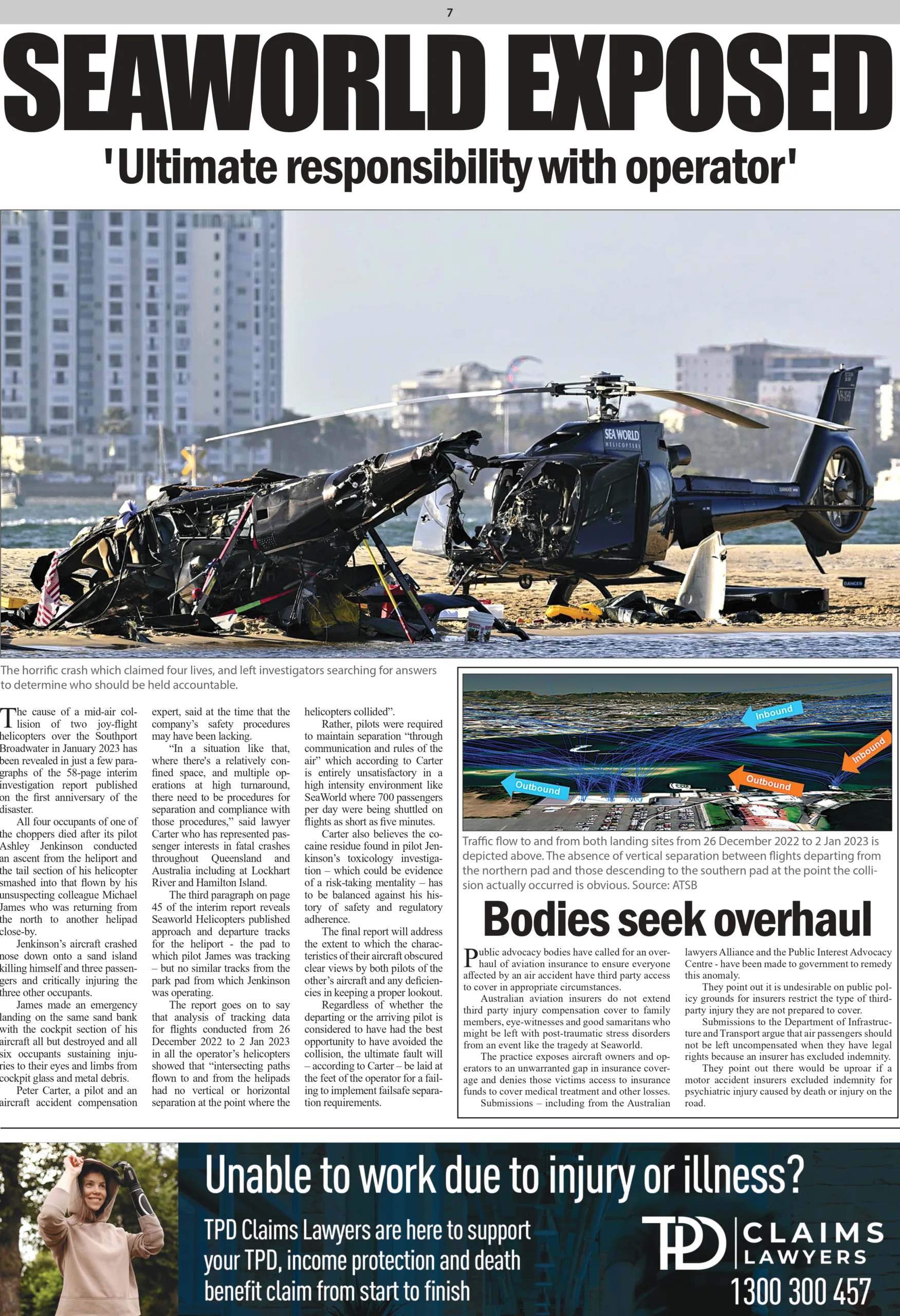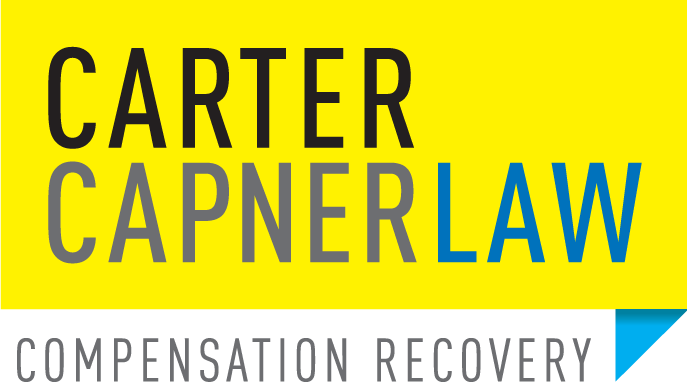
The horrific crash which claimed four lives left investigators searching for answers to determine who should be held accountable.
The cause of a mid-air collision of two joy-flight helicopters over the Southport Broadwater in January 2023 has been revealed in a few paragraphs of the 58-page interim investigation report published on the first anniversary of the disaster.
All four occupants of one of the choppers died after its pilot, Ashley Jenkinson, conducted an ascent from the heliport, and the tail section of his helicopter smashed into that flown by his unsuspecting colleague Michael James, who was returning from the north to another helipad close-by.
Jenkinson’s aircraft crashed nose down onto a sand island, killing himself and three passengers and critically injuring the three other occupants.
James made an emergency landing on the same sand bank with the cockpit section of his aircraft all but destroyed, and all six occupants sustained injuries from cockpit glass and metal debris.
Peter Carter, a pilot and an aircraft accident compensation expert, said at the time that the company’s safety procedures may have been lacking. “In a situation like that, where there’s a relatively confined space and multiple operations at high turnaround, there need to be procedures for separation and compliance with those procedures,” said lawyer Carter, who has represented passenger interests in fatal crashes throughout Queensland and Australia, including at Lockhart River and Hamilton Island.
The third paragraph on page 45 of the interim report reveals that Seaworld Helicopters published approach and departure tracks for the heliport to which pilot James was tracking – but no similar tracks from the park pad from which Jenkinson was operating.
The report goes on to say that analysis of tracking data for flights conducted from 26 December 2022 to 2 January 2023 showed that “intersecting paths flown to and from the helipads had no vertical or horizontal separation at the point where the helicopters collided.”
Rather, pilots were required to maintain separation “through communication and rules of the air,” which, according to Carter, is entirely unsatisfactory in a high-intensity environment like SeaWorld, where 700 passengers per day were being shuttled on flights as short as five minutes.
Carter also believes the cocaine residue found in pilot Jenkinson’s toxicology investigation – which could be evidence of a risk-taking mentality – has to be balanced against his history of safety and regulatory adherence.
The final report will address the extent to which the characteristics of their aircraft obscured clear views by both pilots of the other’s aircraft and any deficiencies in keeping a proper lookout.
Regardless of whether the departing or the arriving pilot is considered to have had the best opportunity to have avoided the collision, the ultimate fault will – according to Carter – be laid at the feet of the operator for failing to implement failsafe separation requirements.
Traffic flow to and from both landing sites from 26 December 2022 to 2 January 2023 is depicted above. The absence of vertical separation between flights departing from the northern pad and those descending to the southern pad at the point the collision actually occurred is obvious. Source: ATSB
Bodies seek overhaul
Public advocacy bodies have called for an overhaul of aviation insurance to ensure that everyone affected by an air accident has third-party access to cover in appropriate circumstances.
Australian aviation insurers do not extend third-party injury compensation cover to family members, eyewitnesses, and good Samaritans who might be left with post-traumatic stress disorders from an event like the tragedy at SeaWorld.
The practice exposes aircraft owners and operators to an unwarranted gap in insurance coverage and denies those victims access to insurance funds to cover medical treatment and other losses.
Submissions – including those from the Australian Lawyers Alliance and the Public Interest Advocacy Centre – have been made to the government to remedy this anomaly.
They point out it is undesirable on public policy grounds for insurers to restrict the type of third-party injury they are not prepared to cover.
Submissions to the Department of Infrastructure and Transport argue that air passengers should not be left uncompensated when they have legal rights because an insurer has excluded indemnity.
They point out there would be uproar if motor accident insurers excluded indemnity for psychiatric injury caused by death or injury on the road.


